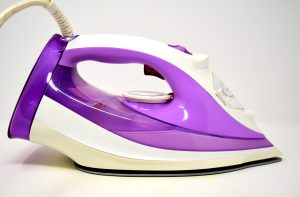Sustainable Urban Living: Innovative Home Solutions
Welcome to the future of sustainable living! With the rise of urban populations and the increasing demands on our natural resources, it is crucial that we find innovative solutions to create a more environmentally friendly and livable urban landscape. One area that has a major impact on both our environment and our daily lives is our homes. From energy consumption to waste production, our living spaces have a significant carbon footprint. In this article, we will explore some of the latest innovative home solutions that can help us achieve sustainable urban living.
The Importance of Sustainable Urban Living
Sustainable urban living refers to the concept of creating cities and communities that prioritize sustainability and promote a healthy balance between people, the environment, and resources. With more than 55% of the world’s population living in urban areas, it is crucial that we focus on creating sustainable cities that meet the needs of both current and future generations.
In recent years, we have seen alarming effects of urbanization, such as air pollution, overcrowding, and depletion of natural resources. These issues not only harm the environment but also have a negative impact on our health and well-being. Sustainable urban living aims to address these challenges by promoting environmentally friendly practices and innovative solutions that can make our cities more livable and resilient.
Smart Homes: The Future of Sustainable Living
Innovations in technology have brought us closer to realizing the concept of smart homes. These homes are equipped with advanced systems and devices that can monitor and control energy consumption, waste generation, and even air quality. By utilizing smart home technology, we can significantly reduce our carbon footprint and contribute to sustainable urban living.
Energy Efficiency
One of the main challenges in achieving sustainable urban living is reducing energy consumption. Smart homes use advanced systems to monitor and control the use of electricity, water, and gas. Homeowners can also track their energy consumption in real-time and make necessary adjustments to reduce their usage. This not only helps in reducing the overall energy demand but also saves homeowners a significant amount of money on their utility bills.
Waste Management
Another crucial aspect of sustainable urban living is proper waste management. With the increasing amount of waste being generated in cities, smart homes have integrated solutions such as composting systems, recycling sensors, and waste sorting devices. These systems not only help in reducing waste but also promote responsible waste disposal practices among homeowners.
Improved Indoor Air Quality
Indoor air quality is a significant concern in urban areas, with buildings and homes being a major contributor to air pollution. Smart home technology includes air quality sensors that can detect pollutants and take necessary actions to improve the air quality inside the house. This not only benefits the residents’ health but also contributes to reducing air pollution in the city.
Green Roofs and Living Walls
In densely populated cities, space is a limited resource, but that does not stop us from finding innovative ways to incorporate nature into our living spaces. Green roofs and living walls are becoming increasingly popular in urban areas as they help in creating green spaces and promoting sustainable living.
Green Roofs
Green roofs refer to rooftop gardens that use vegetation to cover the surface of the roof. These roofs help in reducing energy usage by providing insulation, absorbing rainwater, and regulating indoor temperatures. They also improve air quality by absorbing pollutants and reducing the urban heat island effect, making cities more livable and sustainable.
Living Walls
Living walls, also known as vertical gardens, are a great way to incorporate greenery into urban spaces. These walls are covered with plants that provide numerous benefits such as air purification, sound insulation, and temperature regulation. They also help in reducing stress and promoting a healthier and more sustainable living environment.
Conclusion
Sustainable urban living is not just a trend; it is a necessity for the future of our planet and our well-being. By incorporating innovative home solutions such as smart homes, green roofs, and living walls, we can create a more sustainable and livable urban landscape. So let’s embrace these technologies and practices to take a step towards a greener and more sustainable future.
Sources:
https://www.un.org/development/desa/en/news/population/2018-revision-of-world-urbanization-prospects.html
https://www.epa.gov/smartgrowth/smart-growth-and-emerging-technologies
https://www.sciencedirect.com/science/article/abs/pii/S0013935118301338









